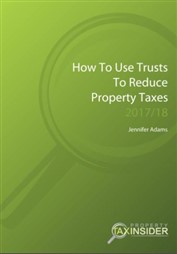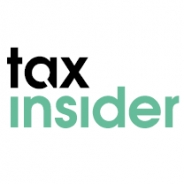
 Prior to the Finance Act 2006, the IHT treatment of trusts was relatively straightforward, such that if a beneficiary was named in a trust then that beneficiary was treated as the owner of the capital held within that trust. On the death of the beneficiary, the trust was subject to IHT at the full tax rate as if the capital had actually belonged to them. Should there have been no defined beneficiary, then the trust was subject to a special tax regime which included a tax charge levied every ten years.
Prior to the Finance Act 2006, the IHT treatment of trusts was relatively straightforward, such that if a beneficiary was named in a trust then that beneficiary was treated as the owner of the capital held within that trust. On the death of the beneficiary, the trust was subject to IHT at the full tax rate as if the capital had actually belonged to them. Should there have been no defined beneficiary, then the trust was subject to a special tax regime which included a tax charge levied every ten years.
This distinction is no more – now all trusts created post-2006 can only be ‘Discretionary’ (‘Relative Property’) Trusts being taxed for IHT purposes using the same special regime. This change in the rules has reduced the value of trusts for IHT planning, but there are still some opportunities available.
Qualifying Interest In Possession Trusts
Most types of trust now fall within the post-2006 regime as ‘Discretionary’ Trusts, although there remain some that are ’excluded’ and as such remain under the pre-2006 regime. These trusts are:
- ‘Qualifying Interest in Possession’ (‘QIIP’) Trusts created prior to 22 March 2006 where the pre-2006 beneficiaries remain in place (or were changed before 6 October 2008);
- Trusts created on or after 22 March 2006 under the terms of a will that gives an immediate interest in the income to a beneficiary (termed 'immediate post-death interest' trusts; and
- Disabled Person’s Trusts.
As an ‘excluded’ trust, the assets are not regarded as ‘relevant property’ which means that there are no tax charges at the ten year ‘anniversary’ (see section 4.3) or on the transfer of any assets out of the trust, but there is an additional tax charge on the initial transfer of assets into the trust.
‘Trusts for Bereaved Minors’ and ’18 to 25 years’ trusts’ are also ‘excluded’ trusts, but with specific rules (see chapter 6 for detail).
'Discretionary' Trusts
The IHT regime for ‘Discretionary’ trusts is intended to have the same overall effect as if the trust’s assets had been owned outright and been subject to a tax charge every 30 years or so as it passed down the generations.
This is achieved through a mixture of charges levied on the value of the assets held within the trust as follows:
- on the transfer of assets into the trust and
- on the ten year ‘anniversary’ of the trust being created (termed the 'periodic charge' and
- on the transfer of assets out of the trust (or cessation of the trust)
The IHT Charge
On transfer of assets into the trust
1. During settlor's lifetime
Should the trust have been created during the settlor’s lifetime, IHT will be due at 20 per cent of the transfer value in excess of the Nil Rate Band (NRB) amount (£325,000 frozen until 2020/21). Therefore, the placing of an asset (e.g. a second or let property) valued at less than NRB will not produce a tax charge if the full NRB is available. Gifts made within the previous seven years ('Potential Exempt Transfers') are aggregated with the transfer to determine the amount remaining of the NRB and if this total figure is higher than the NRB amount then the tax charge is on the excess amount only.
EXAMPLE
James, who has not made any prior chargeable gifts, settles cash of £325,000 on a ‘Discretionary’ life interest trust for himself with the remainder to his children. Under the terms of the Trust Deed, James is entitled to the income from the trust but not the capital. The trustees use the money to invest in a buy-to-let property.
The tax consequences of this arrangement are:
- there is an immediate chargeable transfer but no actual IHT tax to pay as the amount transferred is less than the NRB;
- should James die the trust does not form part of his estate for IHT purposes; and
- once James has survived the transfer by seven years the property falls out of any IHT charge, but he can continue to receive the income.
2. As a Will trust
Trusts created on death (a 'Will Trust') are treated as a disposal of part of the estate’s assets. The estate is subject to the NRB allowance and seven-year rules. In addition, post 6 April 2017, any estate which includes a property that at some time during its period of ownership had been occupied by the deceased as a main residence, downsized to a less valuable home, sold, or given away after 8 July 2015, qualifies for an additional allowance named the Residence Nil Rate Band' ('RNRB).
With reference to will trusts, RNRB can only be claimed by estates where the main residence comes within the rules and is transferred into a specific type of will trust; e.g. an IPDI trust for a lineal descendant (or their spouse/civil partner).
RNRB is not set against the legacy of the residential property but applies generally to the charge on the estate, which could include a trust; i.e. it is not focused on the property so that there may still be a tax charge. The reason for the additional allowance being allowable against the use of those particular type of trusts is because in such trusts it is the trustees who take on the legal ownership of any assets held and as such the beneficiary(ies) do not have the right of 'direct inheritance'.
Any balance of taxable estate remaining is taxed at 40 per cent.
The Ten Year 'Periodic charge'
Every ten years, an IHT charge is levied, the actual tax rate being 30 per cent of the ‘effective rate’ applying to an imaginary cumulated total, which comprises the value of the trust assets plus the value of any assets that have exited from the trust within the previous ten years (otherwise those assets would avoid the charge). 'Discretionary' trusts created prior to the 2006 'relevant property' trust regime will have already paid their first periodic 10-year charge. However, for those trusts set up post-2006, 2016/17 was the first year in which a charge was calculated.
 This is a sample extract from the report ‘How to Use Trusts to Reduce Property Taxes’ published by TaxInsider.co.uk.
This is a sample extract from the report ‘How to Use Trusts to Reduce Property Taxes’ published by TaxInsider.co.uk.



Please register or log in to add comments.
There are not comments added